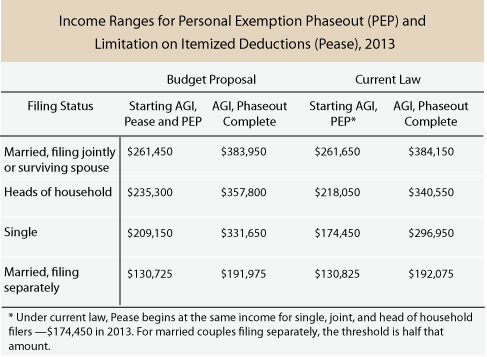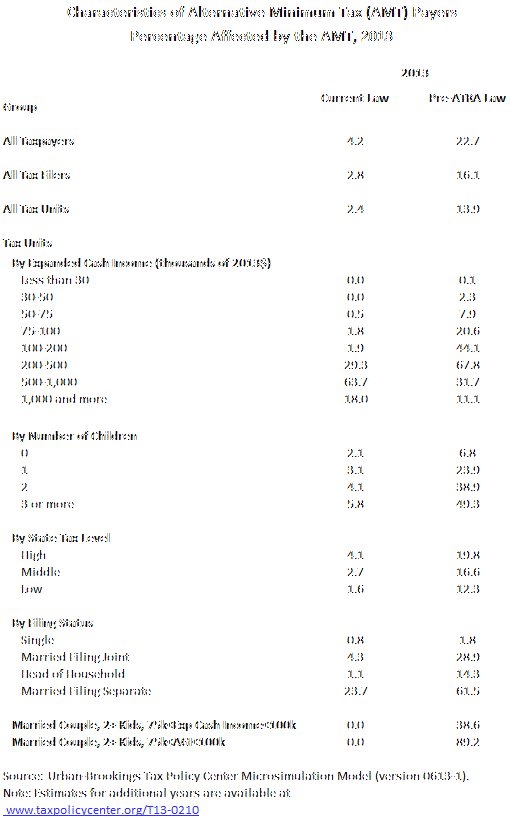TPC Tax Topics
Post on: 16 Март, 2015 No Comment

E-mail Newsletter
Reform U.S. international tax system
The president proposes to tighten enforcement of tax laws to limit offshore tax evasion and change the way U.S. businesses are taxed on foreign income.
During his campaign, the president promised to make it more difficult for individuals to use foreign tax havens to evade U.S. taxes. The president’s budget proposal would make good on this promise by detailing a collection of measures designed to combat tax evasion by Americans and foreigners who use offshore accounts to shelter income from U.S. taxation. The provisions, which would raise $8.7 billion from 2010 to 2019, would require more information reporting, increase tax withholding, and strengthen penalties to support U.S. taxation of income earned or held in offshore accounts or entities.
The president also proposes to change the way the international income of American corporations is taxed. Currently, the U.S. taxes both the domestic and foreign earnings of U.S. corporations. The time at which firms pay U.S. taxes on their foreign profits depends on how the parent company organizes its foreign operations. If operations are organized as subsidiaries (that is, they are separately incorporated in the foreign country), then the profits are generally not taxed until they are paid to the U.S. parent. If operations are organized as branches (that is, they are not separately incorporated in the foreign country), then the profits are taxed when they are earned.
Not all classes of foreign source income earned by foreign subsidiaries enjoy deferral. Under current tax law, certain “passive” income such as income earned from investments in foreign assets, foreign base company sales and services income, and income from the insurance of U.S. risk is taxed upon accrual. In addition, the parent company pays U.S. tax immediately on dividends, interest, or royalties paid by one subsidiary to another. That last rule does not apply, however, to payments within a corporation—for example, from a local branch to the home office.
To prevent income earned abroad from being taxed twice, the U.S. allows firms to claim tax credits for income taxes paid to foreign governments. Firms can use these tax credits to offset U.S. tax liability on foreign-source income. A limitation on the credit for foreign taxes prevents U.S. firms from using these credits to reduce U.S. tax liabilities on income earned at home. The limit is the amount of tax that would be due if the foreign income were earned in the United States.
To understand how the credit works, consider a U.S. company that earns $100 in a subsidiary located in a country with a tax rate of 25 percent so the subsidiary pays $25 tax to the host country. If the subsidiary immediately remits the $100 of earnings to the parent company, the parent company owes $35 of U.S. tax on the $100 (since the U.S. corporate tax rate is 35 percent). However, the company may claim a $25 credit for the tax paid to the foreign country, leaving a net U.S. tax of only $10 (the $35 tax minus the $25 credit).
If the foreign tax rate were 45 percent, and as before the profits are sent home to the parent, the firm would owe $45 in foreign tax, $10 more than the $35 U.S. tax liability. A firm in this situation is said to have excess credits” of $10 (the $45 foreign tax minus the $35 U.S. tax) because its foreign tax payment exceeds the U.S. credit it may claim in the current year. In some situations, the foreign tax credit system allows firms to use excess credits from one source of foreign income to offset U.S. tax payments on income from another source in a procedure called cross-crediting.
To understand how cross-crediting works, consider a company with both of the subsidiaries described above. Cross-crediting allows the parent corporation to offset the $10 net U.S. tax liability on the first subsidiary (in the low-tax country) against the $10 of excess credits of the second subsidiary (in the high-tax country). In this case, simultaneously repatriating income from subsidiaries in both high- and low-tax countries results in no net U.S. tax liability on the $200 of foreign-source income.
The president proposes a package of revenue raising reforms of the international tax system that would affect both the deferral and foreign tax credit features of current law. The bulk of the revenue raised from these provisions would come from changes related to the deduction of expenses against deferred foreign income ($87 billion), the calculation of the foreign tax credit ($43 billion), and the classification of foreign entities ($60 billion). All three provisions would take effect in 2011.
Changes related to the deduction of expenses against deferred foreign income. Under current law, companies with overseas operations may immediately deduct expenses supporting foreign investment while deferring payment of taxes on profits from those investments until they repatriate the profits. Under the president’s proposal, companies could not claim deductions on their U.S. tax returns for expenses supporting their foreign investments (with the exception of research and experimentation expenses) until they pay U.S. taxes on their foreign earnings. The provision would effectively limit the benefit of deferral by raising the cost of delaying U.S. tax payments on foreign profits. The rules governing the provision are complicated and have uneven effects across different industries and companies. Multinational companies that are heavily leveraged and those with relatively large headquarters expenses would suffer most from the provision.
Changes related to foreign tax credits. The president proposes to limit cross-crediting by requiring firms to consider the foreign tax they pay on all of their foreign earnings and profits in determining their foreign tax credits. Under current law, the foreign tax credit is based on earnings and profits on which U.S. tax has been paid. Companies would receive no foreign tax credits for foreign taxes paid on deferred income until they repatriate that income. The provision would limit firms’ ability to blend their repatriations to minimize or avoid U.S. taxes on foreign source income. This proposal would also increase the cost of deferral.

The budget also includes a provision aimed at curbing methods companies use to inappropriately separate creditable foreign taxes from the associated foreign income. Details are lacking but the proposal presumably would target arrangements in which foreign tax credits are claimed by U.S. companies on income not subject to a U.S tax.
Changes related to foreign entity classification. The president would override Treasury’s “check-the-box rules” issued in 1996 to reduce the paperwork required to classify business entities for tax purposes. The rules allow corporations to identify an entity as a separate corporation or to “disregard” it as the unincorporated branch of another corporation by simply checking a box on a tax form. While the regulations were targeted at domestic business, they also allowed companies to easily create “hybrid” entities that are considered a corporation by one country but an unincorporated branch by another.
Check-the-box allows U.S. multinationals to lower their taxes in high-tax countries by shifting income from affiliates in those countries to affiliates in tax havens. Consider a parent company that plans to invest in a high-tax jurisdiction like Germany. Check-the-box lets the firm cut its tax bill by routing capital used to finance the investment through an affiliate in a tax haven like the Cayman Islands.
The diagram shows how this strategy would work.
The parent company first sends investment funds to a wholly-owned Cayman Islands affiliate, which lends the money to a second wholly-owned affiliate in Germany. The German firm uses the loan for an investment project and pays interest to the Cayman affiliate. The parent “checks the box” on the German affiliate, making it an unincorporated branch of the Cayman subsidiary for U.S. tax purposes. But the Germany government considers it to be a separate corporation. As a result, the interest payment from the German firm to the Cayman subsidiary is not taxed anywhere. The payment is deductible in Germany. The interest is not taxed in the U.S. because with check-the-box, the U.S. Treasury regards the combined German/Cayman operation as a single corporation. The interest is not taxed in the Caymans since it has a zero tax rate.
Under current law, the interest payment will not be taxed until it is paid back to the U.S. parent. The president’s proposal would impose current U.S. tax on the interest payment by making sure the hybrid entity remains visible for U.S. tax purposes. As a result, using the tax haven affiliate to finance the German investment would no longer be advantageous from a tax perspective. Interestingly, terminating check-the-box could result in more investment in low-tax foreign locations relative to high-tax locations abroad as investment in high-tax foreign locations becomes more costly from a tax perspective.
The White House press release on May 4, 2009 announcing the new international tax proposals promised that they would “replace tax advantages of creating jobs overseas with incentives to create them at home.” The proposals have the effect of limiting the benefits of deferral, but cutting back on deferral will not create more jobs in the United States. The number of jobs in the United States has little to do with tax provisions that affect selected investments or industries. Instead, employment is influenced by fiscal and monetary policies—as well as periodic shocks to the system such as financial market meltdowns—that determine whether American and foreign consumers and investors are willing to purchase enough American-made goods, services, and assets to keep U.S. workers fully employed. Taxes can indirectly affect employment to the extent they affect overall wage levels, but the effect is likely quite small because labor supply is not very sensitive to wages. Specific tax incentives do affect where Americans work and what they produce and also affect overall living standards by influencing how efficiently we use our scarce people and capital and how much we invest for the future. Specific tax incentives have little impact on total employment.
Additional Resources














